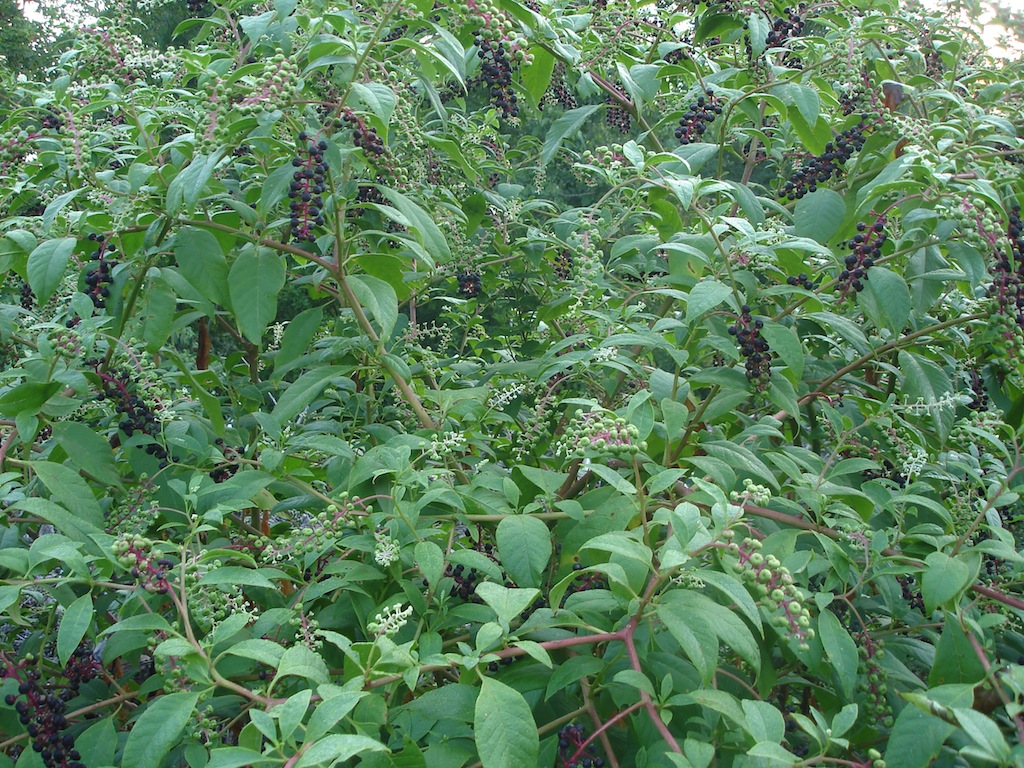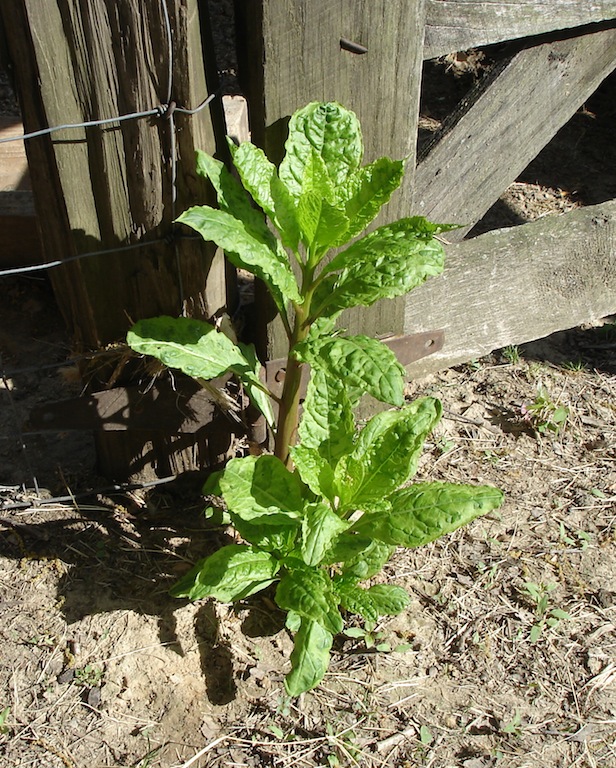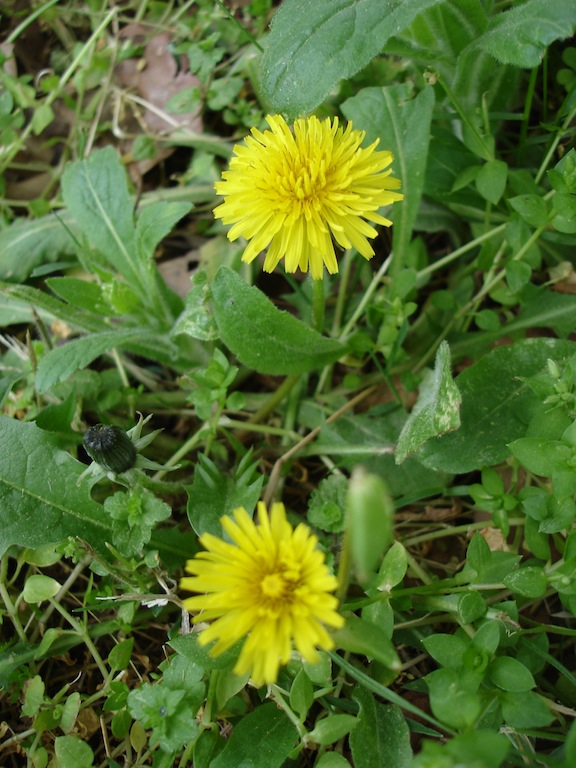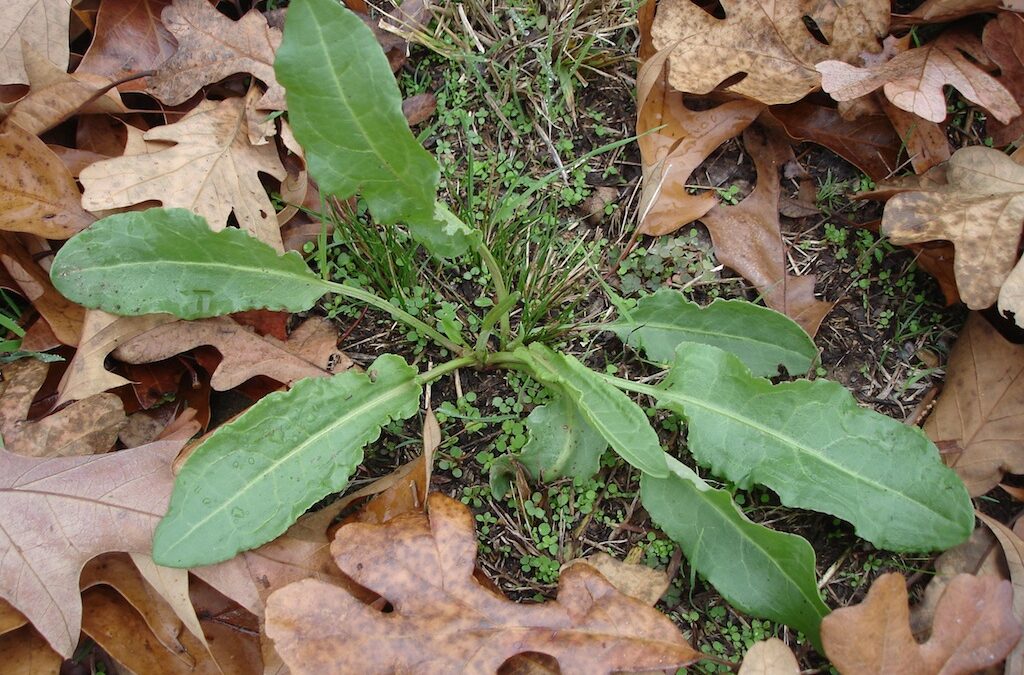I’m pretty sure that greens are called greens for no other reason than…they are, in fact, green. Some are red or blue tinged, but still basically green. Their hue is most noticeably observed in late fall or early spring when not much else around has hue. They seem to attract my attention even more when my plantings of turnip, mustard, or collard greens ended up being slim pickings for reasons out of my control.
Going Wild
For me it’s typically been feast or famine with domestic greens I’ve planted late in the summer. In the past I’ve grown so many I couldn’t give ’em away. The next year I’d try recalibrating, but would end up under doing it and having less than a mess of ’em. [A “mess” is loosely defined as just enough to meet immediate needs. In the country, not making a mess is a bad thing when it comes to greens.] Here’s a solution: If you find that your patch has come up short for any unexpected reason, or if you need to make efficient use of space by planting less greens, try mixing in some native edible plant sources. All it takes is some modest research and practice in identifying these wild and abundant natural resources. These often over-looked potherbs can be added and cooked with their domestic counterparts (as well as eaten alone), and add a rich source of minerals and vitamins for a healthy tonic.
Huntin’ ‘n’ Gatherin’
More often than not, it’s best to gather these green plants while they are young growth. The older plants can become bitter and tough with age, just like many domestic vegetables. So recognizing them when they’re young (since they may look quite different from mature plants) is a worthy skill to acquire. It’s also advisable to not use any plant for food unless you’re sure beyond a reasonable doubt of its identification as an edible species. One more kind word of advice: be sure to pick a little more than you might think you’ll need. Greens really shrink down after cooking.

Mature poke plants near the end of summer. Too big for eatin’ (unless you grab the small leaves), but a great photo op for your poke salet screen saver.
Poke Salet
Poke salet (Phytolacca americana) seems to be the most versatile, reliant, and abundant of the wild greens; got to admit it’s my personal favorite. Unlike its name might imply, never treat any part of the poke salet plant as a “salad”.
It’s somewhat toxic to humans if eaten raw, so proper preparation is fairly important if you don’t like stomachaches. And, sure enough, don’t eat the berries; that’s a guaranteed enough day in the outhouse (or worse). Feed ’em to your chickens. They’ll love ’em and spread ’em. Poke will be pokin’ up everywhere.

You’ll want to pinch the smaller leaves off the top for cookin’. Then in a week or so, there’ll be several more to take their place.
Dock
Dock is a fairly abundant wild green known for its wrinkled leaves that range up to 8 inches long. These grow from the central hub of the plant at the ground level. The tender young leaves are near perfect for use with other greens, domestic or wild, and are rich in vitamins A and C.

Patience dock (Rumex patientia) is easily identified by it’s red-tinged leaves, while curly dock (above) is aptly named, and can have some reddish spots as it matures. I bet you’ve seen both of these before. Now go cook up a mess of ‘em.

Dandelions
As far as dandelions go, most people hate ‘em for destroying that monolithic appearance of their lawn that most city folk really go for. [No offense to you town people. It is pretty…just not my cup of tea].
If this has been the case for you up till now, turn hate into love by picking the young, tender leaves in early spring and adding a generous portion of dandelion greens to your domestic ones. You shouldn’t have to travel much to find a mess of dandelion greens; probably just outside your front or back door is far enough. And quit killin’ ’em off if you appreciate wild eatin’. They don’t look that bad in the yard (to me).

Creasy Greens
Creasy greens, officially known as dry land cress, upland cress, or winter cress, generally grows in the sunny meadows of the Appalachian mountains.
I managed to get my hands on some seed while living in Tennessee, and after sowing some around here, they’re popping up everywhere. They don’t seem to mind not being in Tennessee anymore. They’re pretty too; dark green leaves and bright yellow little flowers. The other beauty of creasy greens is their ability to impart a “horseradishy” flavor to other varieties it’s added to. Creasy greens are easy to recognize by the wagon wheel appearance of young sprouts, and can be picked soon after they’ve grown some. Later on, single pickings of the healthiest looking larger leaves may be added to domestic greens with notable success, imparting their characteristic sharp flavor. Get enough of ’em and you can just cook one big ole mess of creasy greens by themselves. The mustard-ish flavor won’t be that strong.
Taming the Wild Green
Some of the wild greens will need to be boiled two or three times with their water poured off each time before being added to your homegrown domestic greens (turnip, mustard, collard, etc.). Soon after the leaves turn a rich green color, pour off the first water, add more water, and bring to a boil again. This is known as par boiling. Poke is generally considered to be somewhat toxic due partly to the fact that it’s loaded with nutrients that your body probably doesn’t handle well in such high amounts. Par boiling dilutes the barrage of nutrients down to levels that your body is more used to. Dock may be prepared similarly to poke. After cooking, add the par boiled wild greens to your domestic ones and prepare in whatever way you like. Other spring wild plants can serve as seasoning for wild or domestic greens. The more pungent flavors such as wild onions can add some delight to your meal of spring greens.
Other springtime plants can be cooked in the same way as described above. Mix and match varieties depending upon the abundance and/or availability of each. But go easy on yourself at first…these plants are a little stronger than the domestic greens we’re accustomed to.
Nowadays, with modern supermarkets full of plant material from diverse regions of the country and beyond, native wild plants have taken a back seat, having been unintentionally reserved for those of us willing to go hunt ’em down. So if you find you’ve underestimated your green patch when planting, or end up with less than you planned on for whatever reason, grab a sack and head out. Scour the countryside or even circle around a few feet away from your back steps and bring home the green for that special taste of wild greens. It could likely be that next year you’ll want to plant fewer domestic greens…on purpose.
(This article was written by Pa Mac and first published as “A Wild Solution for Domestic Greens” in a 2007 issue of Tennessee Gardener Magazine, excerpted here with permission courtesy of State by State Gardening)
Shared on:
The HomeAcre Hop

